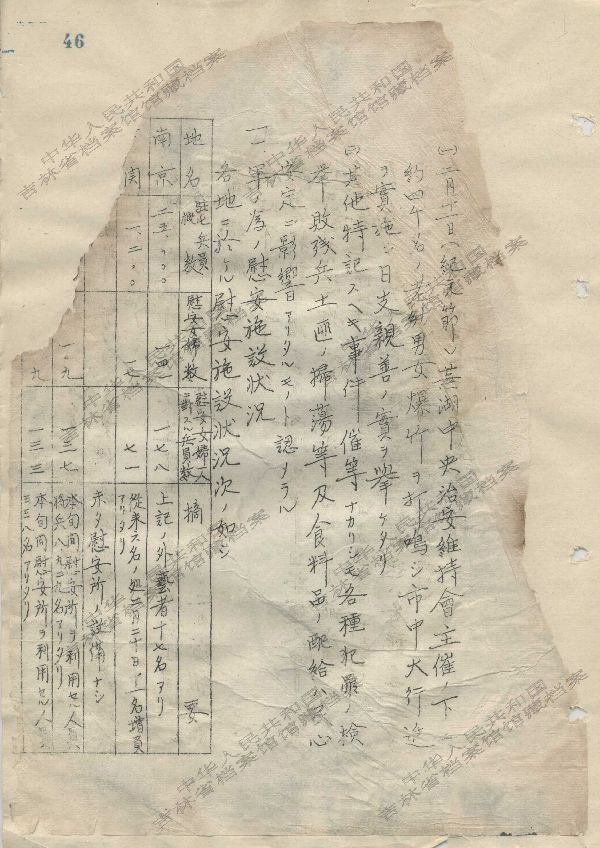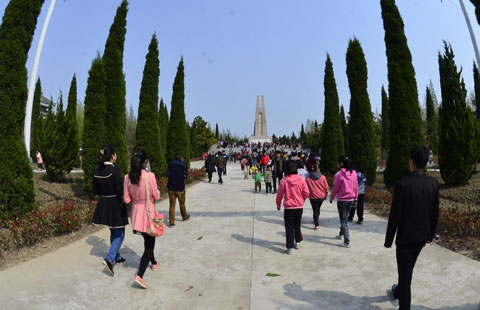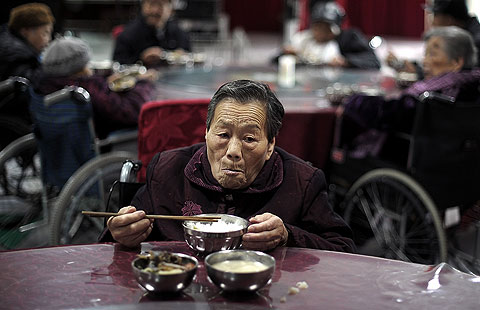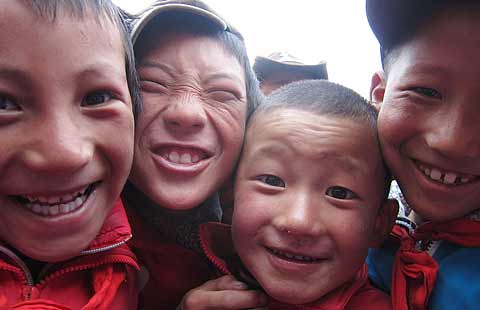Archives on 'comfort women'
Updated: 2014-04-25 19:04
(Jilin Provincial Archives)
|
|||||||||||
|
 |
|
This file is a Report (Circular) on the Investigation on Restoration of Public Order” by Commander Ooki Sigeru of Central China Dispatched Kempeitai on Feb 19, 1938 (the 13th year of the reign of Mikado Showa). The 11th item of the file recorded information on comfort facilities in Nanjing and eight surrounding cities and counties, namely Xiaguan, Jurong, Zhenjiang, Jintan, Changzhou, Danyang, Wuhu and Ningguo, including the number of Japanese soldiers, number of “comfort women”, ratio between the two numbers, composition of “comfort women”, as well as the number of Japanese soldiers who made use of the comfort stations within 10 days. An average of 5,734 soldiers made use of comfort stations every day in early February in Zhenjiang. [Photo provided to chinadaily.com.cn] |
A total of 25 files released this time are related to the “comfort women” system of the Japanese military. These records were found in the archives of the Kwantung Kempeitai and the Central Bank of the Puppet Manchurian Regime. The Japanese military transferred funds to the account of public spending for military use to arrange “comfort women” for the troops. This “comfort women” system subjected numerous Asian women to untold humiliation and sufferings.
These archives mainly recorded:
In 1938, the number of Japanese soldiers and percentage of “comfort women” arranged for them in Nanjing and eight surrounding cities and counties, including Xiaguan, Jurong, Zhenjiang, Jintan, Changzhou, Danyang, Wuhu and Ningguo, as well as the number of Japanese soldiers who made use of the comfort stations within 10 days;
Information on fund transfer by the Japanese military for arrangement of “comfort women” under the account name of public spending for military use;
In 1944, the Java Kempeitai reported that some soldiers went to the comfort station without permission and were late for their duty on board military ships;
Violence against “comfort women” committed by Japanese soldiers; and
Disputes between Japanese and Korean “comfort women” in the comfort station.
Today's Top News
Worries over maritime ambitions 'unnecessary'
Sudsy smiles for China's brewers
Future hangs in the balance
Foxconn wages new kind of ‘war’
Celebrities give thoughts on World Book Day
France on fine line over deficit-cut
Town 'Kill Jews' mulls name change
133 could face prostitution charges
Hot Topics
Lunar probe , China growth forecasts, Emission rules get tougher, China seen through 'colored lens', International board,
Editor's Picks

|

|

|

|

|

|





